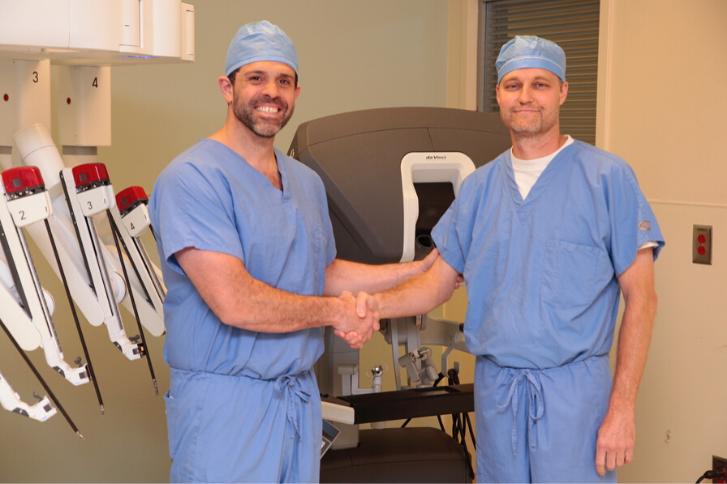Hypospadias Basics: What Every Parent Should Know
Dr. James Elmore, an expert Pediatric Urologist on the Georgia Urology team, sat down to answer parents’ most pressing questions about hypospadias.
What is Hypospadias?
Hypospadias is a common condition in boys where the meatus (pee opening) isn’t where it belongs near the tip of the glans (head) of the penis. Instead, the opening is located along the underside of the penis. The term actually comes from the latin hypo meaning “under” and spade meaning “opening”. It’s one of the most common congenital anomalies and occurs in about 1 out of 300 boys. In many cases, the low opening is also associated with a downward curvature of the penis called chordee (pronounced: Kohr-Dee)
Why Does Hypospadias Happen?
While there is some evidence it may result from certain environmental exposures, there is nothing parents did to cause it or could have done to prevent it from occurring. This is an ongoing area of research.
How will Hypospadias Impact my Child’s Life?
The vast majority of this condition is “distal” or mild. In these cases, the meatus is located close enough to the tip of the penis that it will not impact your child’s sexual function or fertility. However, less frequently, the opening is located in a position that may impact erections and/or fertility.
Can Hypospadias be Corrected?
Yes. Hypospadias can be corrected with outpatient surgery. The surgery is technical and may take 1-2 hours but is not dangerous. In most cases, once fully healed, the penis will look normal-as though surgery was never even done. Often a circumcision is done at the same time, but this is not mandatory. In many cases, a small stent (or catheter) is left in at the time of surgery and removed 1-2 weeks after surgery in the office. For more severe cases, two surgeries are sometimes required to both straighten the penis and to bring the opening into a more normal position.
Who Should do my Child’s Hypospadias Surgery?
The best opportunity for a “perfect” outcome is during the first surgery. We strongly recommend you choose a pediatric urologist who is experienced in this surgery and sees patients with hypospadias regularly. The pediatric urologists at Georgia Urology are experts in the treatment of hypospadias and see patients with this condition almost every single day. We monitor our outcomes very closely to ensure we are offering World-Class care and using state-of-the-art techniques.
When Should My Child Have Surgery for Hypospadias?
There is growing evidence that the earlier the surgery is done, the better. The ideal age to proceed with surgery is between 6 and 12 months depending on the severity. However, hypospadias repair can be done safely at nearly any age.
What are the Risks of Hypospadias Surgery?
While your Georgia Urology surgeon will make every effort to avoid complications following surgery, occasionally these do occur. The most common complications are meatal stenosis and a urethral fistula. Meatal stenosis is a condition where the meatus becomes abnormally small following repair. This can cause a narrow or deflected urinary stream. This is generally very easy to correct with short second surgery. A urethral fistula is an abnormal opening (or hole) along the repair line of the surgery. Similar to meatal stenosis, a second short surgery will likely be required if this occurs. In general, it is best to wait 6 months or longer to fix complications following hypospadias surgery.
Georgia Urology’s Dr. James Elmore is the Associate Director of Robotic Surgery at Georgia Urology, and works with Children’s Healthcare of Atlanta. He is a respected authority in the field of hypospadias, and developed the first and most widely used grading method for hypospadias. This scoring method helps to predict outcomes after surgery and has been adopted at several institutions in the U.S. and abroad. Dr. Elmore has a particular interest in all hypospadias surgery from minor to the most complex. To make an appointment with Dr. Elmore, click here!














